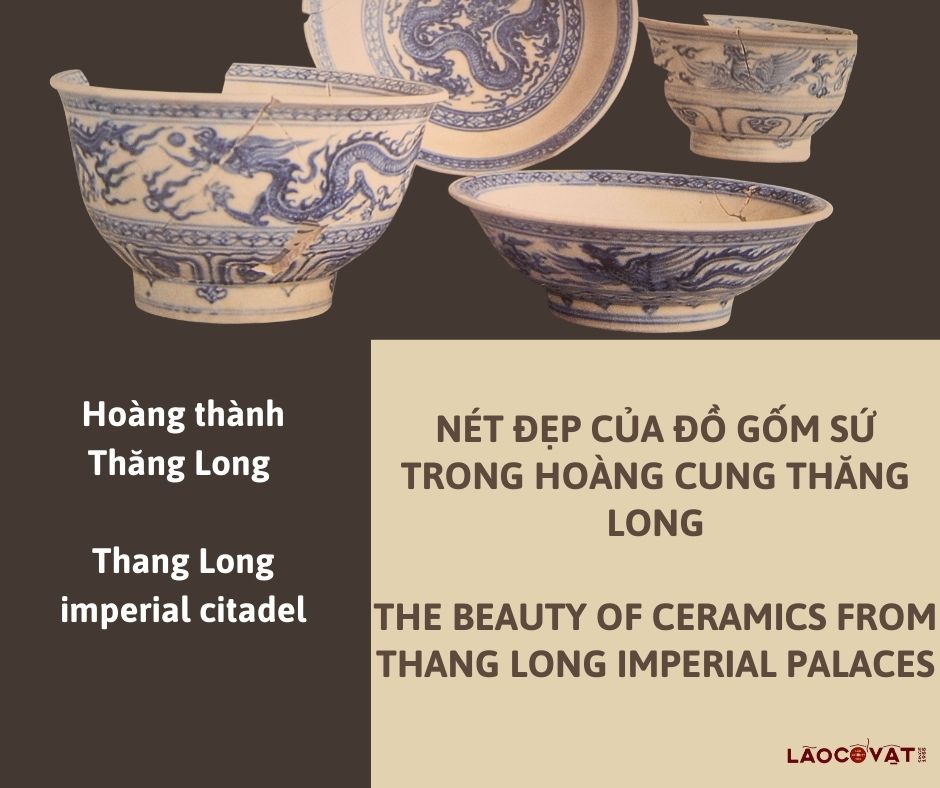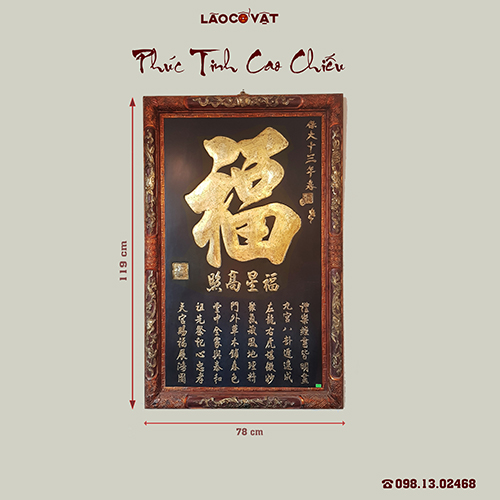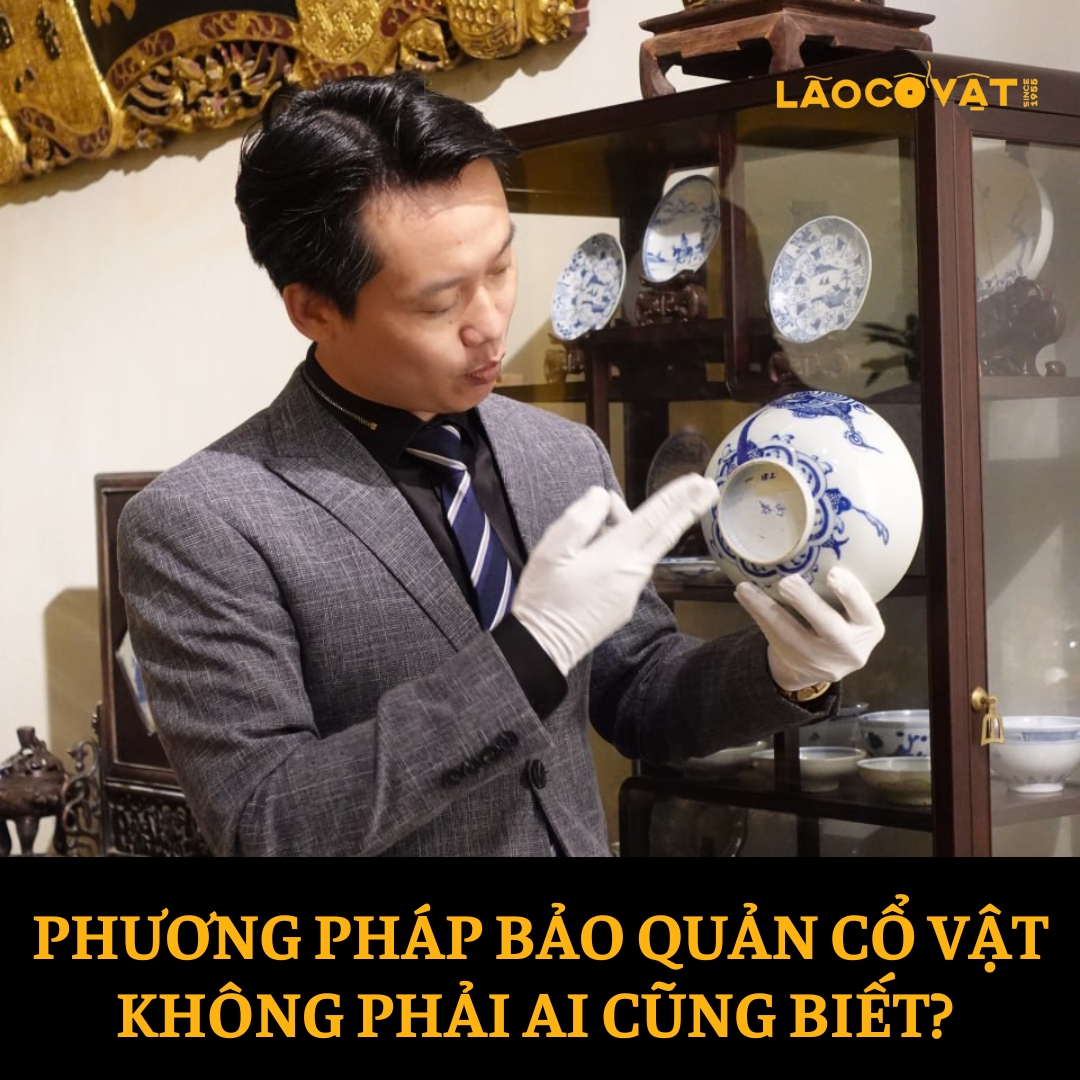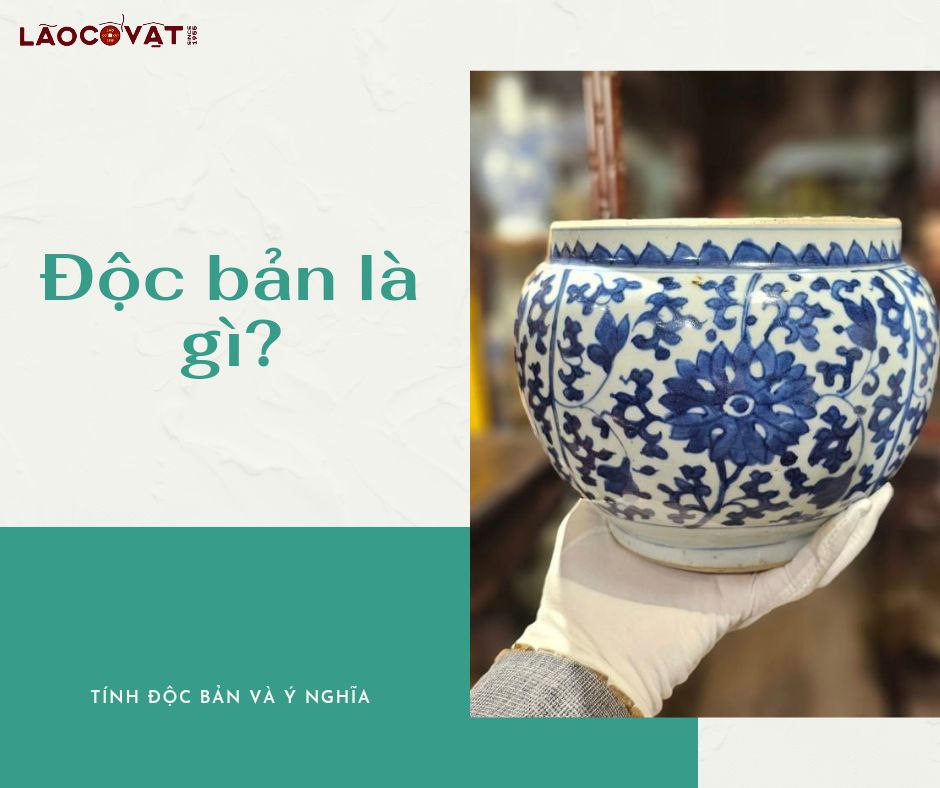NHỮNG DẤU TÍCH CUNG ĐIỆN XƯA - VESTIGES OF OLD PALACES
laocovat
Thứ Bảy, 12 Tháng Mười 2024
Một kiến trúc nhiều gian:
Giai đoạn đầu, tại các hố khai quật ở phía Bắc khu A, các lớp đất ở độ sâu trung bình khoảng 1,50m so với “cốt” cao độ của mặt bậc thềm đá Đoan Môn (được lấy làm “cốt” chuẩn ±0.00 cho toàn bộ khu vực) đã xuất lộ những ô sỏi trộn lẫn đất sét. Sỏi ở đây khá đồng nhất về kích thước, chỉ khoảng bằng hoặc to hơn đầu ngón chân cái, cho thấy đã được chọn lọc. Hiện vật thu được trong các lớp đất này được xác định có niên đại thời Lý. Các ô sỏi thường có hình gần vuông, mỗi cạnh khoảng 1,30m và ăn sâu xuống các lớp dưới, dày khoảng 1,00m. Điều này cho thấy đây là các hố đào có chủ đích để đầm và nhồi sỏi với đất sét. Đáy của các ô sỏi nằm trong lớp đất chứa các hiện vật có niên đại Đinh - Tiền Lê.
Các ô sỏi này xuất hiện trong các hố từ A1 đến A11, tổng cộng có 40 ô, xếp thành bốn hàng dọc. Đây chính là các hố sỏi gia cố dưới chân tảng đá kê dưới cột, có chức năng chống lún. Theo ngôn ngữ kiến trúc, đây là các móng trụ. Kết quả đo đạc cho thấy đây là phế tích của một kiến trúc có bộ khung chịu lực bằng gỗ với bốn hàng chân cột. Khoảng cách giữa các cột Quân với các cột Cái là khoảng 3,00m, trong khi khoảng cách giữa các cột Cái là khoảng 6,00m. Từ bắc xuống nam, đã xác định được 10 vì, có nghĩa là ít nhất kiến trúc này có 09 gian (chưa thể xác định chính xác số gian do dấu vết của kiến trúc này còn kéo dài về phía bắc, ngoài khu vực khai quật).
Bước gian (khoảng cách giữa hai vì) của kiến trúc này rất lớn, khoảng 5,80m - 6,00m, trong khi bước gian của các di tích kiến trúc bằng gỗ cổ truyền hiện còn thường nhỏ hơn.
Cách tim của các móng trụ gia cố chân tảng cột Quân phía đông khoảng 4,5m, một cống thoát nước được xây bằng gạch đã xuất lộ. Lòng cống rộng 0,17m và sâu 0,20m. Đáy cống được xây bằng gạch với hai lớp gạch nghiêng bên thành. Kích thước trung bình của gạch ở đây là 0,36m x 0,20m x 0,05m. Ở phía đông, sát cạnh cống thoát nước này là một thềm gạch rộng 0,76m chạy dọc theo cống. Gạch lát thềm là gạch vuông 0,38m x 0,38m x 0,07m, có chỗ còn in hoa văn.
Cách tim của các móng trụ gia cố chân tảng cột Quân phía tây khoảng 2,5m, cũng phát hiện một cống thoát nước khác. Gạch dùng cho cống này là loại chuyên dụng, được sản xuất đặc biệt để làm cống - rãnh. Các viên gạch có mặt cắt hình thang cân (cạnh ngắn 0,16m, cạnh dài 0,22m, dày 0,08m). Các viên gạch dùng cho thành cống có hình bình hành (cạnh ngắn 0,07m, cạnh dài 2,44m). Hình dáng đặc biệt này cho phép đặt gạch xuống rãnh đã đào để tạo thành cống (đáy rộng 0,22m, miệng rộng 0,32m, sâu 0,30m).
Các đường cống này là các rãnh thoát nước mưa của “tòa nhà nhiều gian.” Các cống này không có nắp để hứng nước mưa rơi thẳng xuống từ mái. Khoảng cách từ tim rãnh thoát nước phía đông là 17,65m, xác định kích thước chiều rộng của “tòa nhà nhiều gian.”
.jpg)
Các kiến trúc kiểu “lầu lục giác”
Về phía tây của “tòa nhà nhiều gian,” cách 4,90m từ tim các móng trụ sỏi gia cố chân tảng cột Quân phía tây, đã tìm thấy thêm các móng trụ gia cố khác. Vật liệu gia cố có phần đa dạng hơn; ngoài sỏi, còn có ngói vỡ vụn được nhồi và đầm theo chu kỳ một lớp sỏi và một lớp ngói vụn. Hình dạng các hố đào cũng khác, có hố tròn (đường kính từ 1,10m đến 1,30m) và hố vuông (1,20m x 1,20m). Bố cục của các móng trụ chân tảng này khá đặc biệt: sáu trụ móng tròn quây quanh một trụ móng vuông ở giữa. Khoảng cách trung bình giữa tim các móng trụ tròn (hình lục giác gần đều) là khoảng 1,30m, với trụ móng vuông trùng với tâm của hình lục giác.
Các cụm móng trụ này trải dài suốt mặt phía tây của “tòa nhà nhiều gian.” Khoảng cách giữa các cụm (11 cụm) không đều, dao động từ 8,00m đến 12,00m. Cụm móng trụ như vậy là phế tích của một “lầu lục giác” nhỏ, phục vụ nhu cầu thưởng ngoạn, được ghi nhận trong Việt sử lược với tên gọi “Trà đình.”
Trong các hố A19, A20, A20MR và A21, cũng xuất lộ nhiều móng trụ sỏi.
Ở phía nam khu A, tại hố A20, một cụm phế tích rõ ràng hơn đã được phát hiện. Khác với các phế tích đã mô tả, cụm này vẫn giữ nguyên chân tảng đá, xác nhận chức năng của các hố sỏi. Hố gia cố chân tảng ở đây hình vuông (1,30m x 1,30m) với vật liệu hỗn hợp gồm sỏi nhỏ, gạch, và đá vụn. Tất cả có 09 chân tảng, xếp thành bốn hàng theo trục đông-tây, cách đều nhau 5,75m.
Các chân tảng đều bằng sa thạch màu xám, với hoa văn cánh sen mang phong cách nghệ thuật Lý. Đường kính trong của vành hoa sen là 0,49m, cho thấy cột gỗ có đường kính 0,43m được đặt trên đó.
Đặc biệt, cụm phế tích này còn giữ nguyên một số đoạn thềm lát gạch ở phía ngoài xà ngưỡng, rộng khoảng 1,00m từ tim chân tảng. Thềm gạch này gồm 8 hàng gạch (0,39m x 0,20m x 0,05m) cao hơn mặt sân 0,36m, được lát bằng gạch vuông (0,38m x 0,38m x 0,06m).
Các phế tích kiến trúc ở khu A cho thấy một tổ hợp kiến trúc liên kết mật thiết, bao gồm “tòa nhà nhiều gian” và các “lầu lục giác.” Sự liên hệ giữa các kiến trúc này rất đáng chú ý. Một số mảng nền lát gạch vuông nối liền giữa “tòa nhà nhiều gian” và các “lầu lục giác” cho thấy chúng có thể được xây dựng cùng thời.
Về niên đại, chúng tôi đã sử dụng phương pháp đối chiếu và so sánh tổng hợp cùng với phân tích địa tầng để khẳng định niên đại cho các dấu tích kiến trúc này.
Các trụ móng sỏi ở hố A20 còn nguyên chân tảng, cùng với nhiều di vật thời Lý, cho thấy đây là dấu tích kiến trúc của thời Lý. Niên đại này được củng cố qua việc so sánh với các kiến trúc cùng niên đại tại Đoan Môn, đều nằm ở độ sâu khoảng 2m. Móng trụ sỏi ở “kiến trúc nhiều gian” và “lầu lục giác” có chung kỹ thuật, vật liệu và kích thước với các trụ móng sỏi thời Lý.
Căn cứ vào sự tương đồng về kỹ thuật xây dựng và niên đại, chúng tôi có thể khẳng định rằng các phế tích này thuộc về thời Lý. Điều này càng được xác nhận khi phát hiện một hồ nước cổ bị lấp đầy trong thời Trần, chứng tỏ rằng hồ đã được đào vào đầu thời Trần và bị lấp đi vào cuối thời Trần.
.jpg)
Kiến trúc cổ truyền Việt Nam chủ yếu là các công trình có hệ chịu lực bằng khung gỗ, với các cột là cấu kiện cơ bản. Người Việt chỉ chú trọng gia cố nền mà không cần đến móng. Sức nặng của công trình được phân tán qua hệ cột, nên chân các cột đá được gia cố bằng các chân tảng lớn hơn nhiều lần so với đường kính cột.
Hiện trạng khảo cổ học và khảo sát địa chất cho thấy có một dòng chảy cổ theo hướng Bắc - Nam ở phía tây các phế tích. Nền đất tự nhiên chịu tải kém, do đó các công trình kiến trúc ở đây đều có hệ thống hố gia cố chân tảng. Điều này phản ánh sự tiến bộ kỹ thuật của người Việt trong xây dựng.
Các phế tích kiến trúc ở khu A còn cần được nghiên cứu kỹ hơn. Mặc dù chưa thể xác định quy mô và công năng của tất cả các công trình, rõ ràng các phế tích này cho thấy một quần thể kiến trúc phong phú, giúp tái hiện một phần diện mạo của Hoàng thành Thăng Long xưa qua dấu vết vật chất.
.jpg)
A Multi-Compartment Monument
In the initial stage of excavation in the northern Section A, researchers uncovered squares of pebbles mixed with clay at an average depth of 1.5m compared to the highest level of the Doan Mon stone surface, which served as the standard level (±0.00) for the entire excavation area. The pebbles found here are nearly uniform in size, about the size of a human big toe, indicating they were selectively chosen. Artifacts from these layers are believed to date back to the Ly period. These pebble squares are approximately square, with each side measuring about 1.30m and extending about 1.00m underground. This suggests they were excavated for ramming and filling with pebbles and clay. Artifacts found at the bottom of these pebble columns are from the Dinh and pre-Le periods.
Pebble squares were also identified in trenches A1 to A11, with a total of 40 squares arranged in four horizontal lines. These are pebble holes beneath stone bases that support the pillars, functioning to prevent subsidence. More specifically, architecturally, they serve as pillar-supporting bases. Measurements confirm they are remnants of a structure with a wooden framework featuring four rows of pillars. The distance between subordinate columns and main pillars is about 3.00m, with 6.00m between the main pillars. A total of 10 rafters were found, indicating that this monument had at least nine compartments (it remains unclear how many compartments exist since traces suggest the structure extends northward beyond the excavation site).
The distance between rafters is quite large, measuring approximately 5.8m-6m, which is generally shorter in traditional wooden monuments today.
About 4.5m east of the subordinate column bases, along the full width of the "multi-compartment palace," a brick ditch was discovered. It measures 0.17m wide and 0.20m deep. The bottom consists of a brick layer, and the walls are constructed with two sloping layers of bricks. The average dimensions of these bricks are approximately 0.36m x 0.20m x 0.05m. East of the ditch lies a 0.76m-wide floor that runs its entire length. The flooring bricks are square, measuring 0.38m x 0.38m x 0.07m, with some featuring floral patterns.
Approximately 2.5m from the center of the main pillars, another sewer was found. The bricks used for this ditch were specially made for drainage purposes, with a trapezoidal cross-section (short side: 0.16m; long side: 0.22m; thickness: 0.08m). The walls feature parallelogram-shaped bricks (short side: 0.07m; long side: 2.44m). This ditch was formed by placing bricks in a dug trench (bottom: 0.22m wide; mouth: 0.32m wide; depth: 0.30m).
These ditches served to drain rainwater from the "multi-compartment palace," allowing rainwater to flow directly into them from the roof eaves, known locally as eavesdrips. The dimensions of these ditches indicate the limits of the roof plan, with the distance from the center of the eastern ditch measuring 17.65m, defining the width of the palace.
.jpg)
"Hexagon-Styled" Monument
To the west of the "multi-compartment palace," approximately 4.90m from the center of the pebble bases, further bases for stone pedestals were discovered. The strengthening materials here are more varied; in addition to pebbles similar to those previously found, broken bricks were used in a layering pattern. The dug trenches also exhibit varied shapes: some are round (1.10m - 1.30m in diameter), while others are square (1.20m x 1.20m). These bases have a unique structure, featuring six round bases surrounding one main square base in the middle. The average distance between the centers of the round bases (forming a balanced hexagon) is about 1.30m, with the center of the square base coinciding with the center of the hexagonal circumcircle, about 1.30m from the center of the round bases.
These strengthening bases are spread throughout the western section of the "multi-compartment palace." The distances between the 11 groups of bases are uneven, ranging from 8.00m to 12.00m. Such bases are remnants of a small "hexagonal palace" believed to have been used for entertainment purposes, referred to in Viet Su Luoc (Brief Vietnamese History) as a "Tea Communal House."
In Trenches A19, A20, A20MR, and A21, many gravel pillar foundations were also unearthed.
In the area south of Section A in A20, clearer ruins were uncovered. Unlike the previously mentioned ruins, these include stone pedestals in situ on the strengthening pebble bases, confirming their function. These pedestals are square (1.30m x 1.30m) and constructed from a mixture of small pebbles, broken bricks, and stones. There are nine pedestals arranged in four rows along the east-west axis, each spaced 5.75m apart.
All pedestals are made of grey sandstone, featuring a Ly-styled lotus shape carved on the surface. Their inner diameter is 0.49m, and evidence suggests that wooden pillars erected on them had a diameter of 0.43m.
Notably, intact pieces of a brick terrace were found outside the transverse beam, approximately 1.00m wide from the center of the pedestal. This terrace consists of eight bricks (0.39m x 0.20m x 0.05m) and rises 0.36m higher than the surrounding yard, which is paved with square bricks (0.38m x 0.38m x 0.06m).
The architectural ruins in Section A represent a complex closely linked to each other, comprising a "multi-compartment palace" and several "hexagonal pavilions." The interconnections between these monuments are particularly noteworthy. At the site, patches of square brick floors (0.38m x 0.38m x 0.08m) can be seen connecting the edges of the ditches in the west of the "multi-compartment palace" with the "hexagonal pavilion."
.jpg)
From the traces of this square brick floor, it is inferred that the "multi-compartment palace" and the "hexagonal pavilion" were built concurrently.
Regarding dating, we utilized comparative analysis and synthetic comparison alongside geological strata analysis to confirm the age of the architectural remains in Section A.
Focusing on the pebble bases with relative standard dating, it was noted that eight stone pillar pedestals remain in situ in Trench A20. All were crafted from sandstone, skillfully carved with slender and polished lotuses reminiscent of those from the Ly period, found at the 1057 Tuong Long stupa (Hai Phong) and Chuong Son stupa (Nam Dinh). Additionally, many Buddhist leaves and ceramics from the Ly period were discovered in Trench A20. The various types of bricks used for the terrace edges in front of the palaces share identical shapes and colors with those from Ly period stupas. We assert that these findings are relics from the Ly dynasty, further corroborated by the fact that the plans of these structures align with the standard strata of the Ly-Tran periods at Doan Mon, all at a depth of about 2.00m.
It is evident that the pebble bases from the "multi-compartment palace" and the "hexagonal pavilion" share similar techniques, materials, and dimensions with those from the Ly period in Trench A20.
The bases are located at the same depth of 1.80m-2.20m as those in Trench A20, indicating they all belong to the Ly period. Moreover, the construction techniques suggest that they are from the Ly-Tran periods. In the Ly period, the technique for reinforcing structures with pebbles is notably seen at Lang Pagoda (Hung Yen) and the Chuong Son and Pho Minh stupas (Nam Dinh).
The Ly period pebble bases were typically well consolidated, contrasting with those from later periods (possibly the Le), which, while also consolidated with pebbles, were simpler and set at a greater depth. In other words, the Le period pebble bases are situated at a higher level than those from the Ly-Tran periods.
Furthermore, the plan of the Ly period, with bases and pedestals, was found covered with artifacts dating back to the Ly period, strongly indicating that they are predominantly from that era. This is further supported by the discovery of an ancient, nearly rectangular lake filled with Ly-Tran period construction materials in the southern area of the "multi-compartment palace," suggesting that the lake was filled during the Tran dynasty. This lake damaged the foundation of the hexagonal pavilion and part of the bases of the "multi-compartment" monument, likely excavated in the early Tran period and ceasing operations in the late Tran dynasty. Thus, it is reasonable to conclude that the exposed pebble bases, all belonging to the same plan, date to the Ly period.
.jpg)
Traditional Vietnamese monuments are characterized by force-resistant wooden frameworks, primarily consisting of a pillar system. Thus, builders focused more on consolidating the floor rather than the foundation. The weight of the structure rests on the pillar system, necessitating that stone pillar feet are supported by pedestals significantly larger than the pillar diameters. The current archaeological state (cultural layers and artifacts) and geological survey results indicate the presence of an ancient river (running north-south) west of these ruins. The natural ground composition here is weak, necessitating that all monuments include a system of strengthening bases in holes. This achievement reflects advanced construction techniques of the Viets.
From an architectural archaeology perspective, these ruins also provide valuable insights into pedestal consolidation techniques and how to determine the dimensions and scale of a monument based on the traces left behind. This technique was similarly observed in the ancient capital of Hoa Lu during the Dinh-Le dynasties, where pillar bases were constructed with five-layer ironwood raft foundations topped with stone bases. In the Ly and Tran periods, this method was replaced by the use of pebbles, broken bricks, and terracotta for constructing pillar bases. The Ly and Tran pebble bases are among the largest and most stable in Vietnamese architectural history.
The architectural ruins in Section A warrant further study. While it is challenging to confirm the scale and purpose of all constructions, it is evident that these remains reveal a vivid complex of cross- and down-compartment monuments. The essence of part of the ancient Thang Long Imperial Citadel has been demonstrated through material traces rather than merely through literature and semantics.
theo: Hoàng Thành Thăng Long
-------------------------------------------------------------------
𝐋𝐀𝐎 𝐂𝐎 𝐕𝐀𝐓
Cổng thông tin cổ vật - Thẩm định cổ vật
🔹 Fanpage: Lão Cổ Vật
🔹 TikTok: www.tiktok.com/@laocovat
🔹 YouTube: www.youtube.com/@laocovat
🔹 Email: contact@laocovat.com
🔹 Contact : 0981302468
#LaoCoVat #antique #since1955 #ThẩmĐịnhCổVật
Tin liên quan
laocovat
Thứ Bảy, 12 Tháng Mười 2024


Địa Chỉ Cửa Hàng Chúng Tôi
Hotline: 098.13.02468
Email: contact@laocovat.com
Địa chỉ: 146 Nghi Tàm - Tây Hồ - Hà Nội








